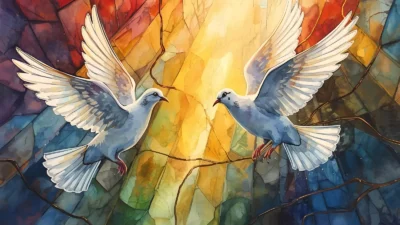Introduction
If you’ve ever stared at the sky and thought, “That cloud looks like my ex’s cat,” you’re not alone. In fact, people have been cloud-gazing since ancient times, searching for signs, meanings, and even cosmic texts scribbled across the heavens. In 2025, cloud symbolism has taken on fresh energy—part spiritual, part trendy, and yes, part meme-worthy. With TikTok filters that literally turn your face into a storm cloud and viral jokes about “having a cloud over your head,” it’s no wonder people are more curious than ever about what clouds really symbolize.
Clouds aren’t just fluffy sky-decorations. They represent mystery, transformation, divine messages, and emotional depth. Some cultures view them as heavenly messengers, while modern thinkers see them as metaphors for mood, creativity, and change. Whether you’re into spirituality, self-reflection, or simply love puns (because let’s be real—clouds are the original soft-serve of nature), diving into cloud symbolism can brighten your perspective and maybe even lift your spirits when life feels a little overcast.
So, let’s float right in and explore the hidden messages above us, one cloud at a time.
Cloud Symbolism in Spirituality
- Clouds are often seen as heavenly messengers, carrying divine whispers across the sky.
- Many religions view clouds as symbols of mystery and revelation, hiding truths until the right moment.
- In spirituality, clouds often represent the soul’s journey through uncertainty.
- A cloudy sky can be a sign of emotional transitions, like moving through grief or renewal.
- Some mystics believe clouds symbolize divine protection, shielding us from too much light.
- Dreams with clouds often represent hidden emotions waiting to surface.
- White clouds are linked to peace, purity, and spiritual alignment.
- Dark storm clouds often symbolize tests, challenges, and breakthroughs.
- Seeing unusual cloud shapes can feel like personal messages from the universe.
- At their core, clouds symbolize mystery wrapped in beauty—just like human emotions.
White Cloud Symbolism
- White clouds often symbolize peace, hope, and renewal.
- They’re like nature’s version of a “clean slate” floating in the sky.
- In meditation, white clouds can represent calmness and inner purity.
- A clear sky with scattered white clouds mirrors emotional balance.
- Seeing a white cloud in a dream can symbolize clarity after confusion.
- White clouds are often linked with guardian angels or divine presence.
- They’re considered positive omens in many cultures.
- White fluffy clouds inspire childlike wonder and imagination.
- They symbolize openness to new beginnings.
- Spiritually, they’re reminders that serenity is always within reach.
Dark Cloud Symbolism
- Dark clouds symbolize struggles and challenges looming overhead.
- They’re metaphors for carrying emotional “weight” or burdens.
- In spirituality, they signal a period of testing or transformation.
- Dreaming of dark clouds can reflect anxiety or hidden fears.
- Yet, they also mean rain and renewal are coming.
- Dark clouds remind us that storms always pass and clear the way.
- They symbolize mystery and unpredictability in life.
- Some traditions see them as signs of divine strength in hardship.
- They often mirror the phrase “a cloud over your head.”
- Spiritually, dark clouds are about endurance and hope through trials.
Cloud Symbolism in Dreams
- Clouds in dreams reflect your emotional weather forecast.
- White clouds suggest inner calm or blessings on the horizon.
- Dark clouds may show unresolved issues weighing on you.
- Flying above clouds often represents freedom and spiritual awakening.
- Cloudy skies in dreams can symbolize confusion or unclear paths.
- A break in the clouds suggests answers arriving soon.
- Dreaming of storm clouds might warn of upcoming challenges.
- Cloud shapes can mirror hidden symbols or personal signs.
- Rain clouds often mean release and emotional cleansing.
- Overall, clouds in dreams reflect the state of your inner world.
Biblical Cloud Symbolism
- In the Bible, clouds often represent God’s presence and glory.
- They appear in Exodus when guiding the Israelites through the desert.
- Clouds symbolize divine mystery and unseen wisdom.
- They often serve as a veil between heaven and earth.
- White clouds are associated with divine promises and peace.
- Dark clouds often accompany prophecy, judgment, or revelation.
- The “cloud of witnesses” in Hebrews represents spiritual support and guidance.
- Jesus is described as returning on the clouds of heaven.
- Biblical clouds symbolize protection and divine covering.
- Ultimately, clouds in scripture embody divine communication.
Symbolism of Clouds in Literature
- Poets use clouds as metaphors for fleeting emotions.
- Dark clouds often symbolize tragedy or foreboding.
- White clouds are linked to innocence and fleeting joy.
- Clouds often represent change and impermanence.
- In novels, cloud imagery creates atmospheric tension.
- Romantic writers often described clouds as soul mirrors.
- They’re symbols of longing, dreams, and unreachable heights.
- Clouds in literature evoke mystery and depth.
- They often mirror the state of a character’s mind.
- Overall, clouds serve as poetic bridges between sky and soul.
Cloud Symbolism in Art
- Artists use clouds to symbolize freedom and transcendence.
- Renaissance art portrayed clouds as divine platforms for angels.
- Romantic paintings used clouds for drama and mood.
- White clouds symbolize innocence and light in artworks.
- Dark clouds add mystery and emotional depth.
- Clouds often serve as backdrops for heavenly visions.
- In modern art, clouds symbolize dreams and imagination.
- Digital artists use clouds to represent fluid creativity.
- They remind viewers of impermanence and flow.
- Clouds in art are expressive, timeless metaphors.
Symbolism of Clouds in Different Cultures
- In Chinese culture, clouds symbolize luck and good fortune.
- Japanese art often depicts clouds as heavenly realms.
- Native American traditions see clouds as rain-bringers and blessings.
- In Hinduism, clouds represent divine moods and cosmic cycles.
- Greek mythology linked clouds to gods and transformation.
- African cultures viewed clouds as ancestral messengers.
- Celtic traditions tied clouds to mystery and hidden truths.
- In Islam, clouds are reminders of Allah’s mercy through rain.
- Polynesian cultures saw clouds as navigational guides.
- Across the world, clouds symbolize divine connection and flow.
Cloud Symbolism and Emotions
- People often describe sadness as “feeling under a cloud.”
- Joy is compared to floating on cloud nine.
- Clouds mirror the temporary nature of moods.
- White clouds symbolize hopeful emotions.
- Dark clouds represent worry or heaviness.
- Shifting clouds reflect emotional change and adaptability.
- Cloudbreaks symbolize relief and breakthroughs.
- Storm clouds embody stress or inner battles.
- Sunlit clouds inspire optimism and comfort.
- Emotions, like clouds, are constantly moving and evolving.
Cloud Symbolism in Everyday Life
- Seeing unusual clouds may feel like a spiritual sign.
- Watching clouds can spark creativity and mindfulness.
- People use “cloud metaphors” in everyday speech.
- Clouds are linked to moods, feelings, and imagination.
- Cloud-gazing is a form of natural meditation.
- Tech even borrowed the term “cloud” to symbolize limitless storage and expansion.
- Clouds remind us of life’s constant motion and impermanence.
- They symbolize the hidden and revealed aspects of truth.
- In daily life, clouds inspire reflection and pause.
- Ultimately, clouds are symbols of balance between light and shadow.
Conclusion
Clouds are more than weather—they are sky-poems, divine whispers, and emotional mirrors. From spirituality and dreams to art, culture, and daily life, cloud symbolism helps us see meaning in what often goes unnoticed.
So next time you find yourself staring up, ask: Is it just a cloud, or is the universe sending a fluffy little reminder? Share this article with a friend who loves puns and skies—and don’t be shy about copying a line or two when you want to brighten someone’s cloudy day.




